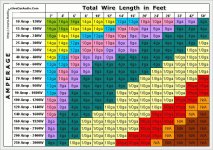Not to dissuade you, but to offer other alternatives:
A small gas generator is much more efficient for generating power for tools than an idling truck engine. A 2,000W generator/invertor can cost less than $400, or as much as $1,000. Plus small generators can easily be carried closer to where you need the tools.
You can also just get a portable power unit, these things can meet demands up to about 500W. These aren't generators, they're battery packs. Some models go higher, but not sure how long they can carry the load. Charge them at home, or off an inverter off the truck as needed. The 1kW ones tend to draw about 8A, or 950W, to charge, which is more than double what the truck's built-in inverter can handle.
I say this because I've been in situations where I needed power tools and the truck seemed the ideal solution. However, it wasn't, at least not without upgrading the inverter at a minimum. And there are the additional complications that Jsrunnlus mentioned above. I am lucky enough that all the power tools I intend to drag around now run off batteries, so I can run off the truck inverter for a while just powering battery chargers. But a few years back, I was using a small 2kW gas generator, about the same size as a carry-on bag. I ran several portable tools off of it, including a table saw, tile saw, miter saw, routers, and demo saws, pumps, blowers, sprayers, and even small compressors. Not at the same time, of course. Each one was a 10-15 amp tool, any two of which would probably have overloaded it. But it did a heroic job of keeping up with me on one tool at a time.

